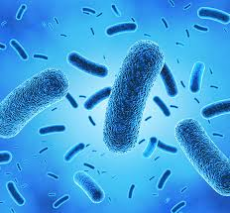

Let’s begin with some definitions to avoid confusion!
1) Biocides are disinfectants, antiseptics and sterilisation
2) Disinfectants are products that are used on inanimate objects or surfaces
3) Antiseptics are products that destroy or inhibit the growth of microorganisms in or on living tissue
4)Sterilisation is the physical or chemical process that completely destroys or removes all microbial life, including spores
5)Antibiotics are low molecular substances produced by microorganisms that at a low concentration inhibits or kills other microorganisms
6)Antimicrobials are any substances of natural, semisynthetic or synthetic origin that kill or inhibit the growth of microorganisms but cause little or no damage to the host. Therefore
all antibiotics are antimicrobials but not all antimicrobials are antibiotics.
7)Antibiotic resistance is when bacteria change in response to the use of medicines, they are now resistant to the treatment used on them and so the treatment is ineffective.
8)Antimicrobial resistance is the broader term, encompassing resistance to drugs to treat infections caused by other microbes as well, such as parasites, viruses and fungi.
There are numerous types of antimicrobials, they can be:
Plant based (essential oils), metal-based (copper, silver), nanotechnology-based (antimicrobial peptides, fullerenes, nanoparticles) animal based (escapin from the sea, snake venom L-amino acid oxidases), or microbe-based (bacteriophage, bacteriocins)
Plant based antimicrobials
An example: isoquinoline alkaloid emetine from Cephaelis ipecacuanha used to treat dysentery and the treatment of abscesses due to the spread of Escherichia histolytica infection. This antimicrobial is found in Central America; however, it was found to be unsafe and so is no longer being used as treatment.
Modern day examples include tannins, alcohols, aldehydes, steroids, alkaloids, and phenolic compounds. The major constituents of essential oils are menthol, thymol and carvone.
Curcumin is a vibrant yellow chemical compound found in specific plants (in the rhizome of the Curcuma longa plant.) Curcumin is found in turmeric, which you a probably familiar with. It is a natural phenolic compound with potent anti-tumour, anti-inflammatory, anti-oxidant, and antimicrobial properties. The benefits have been vigorously researched and so if you do not already do so, start cooking with a bit of turmeric!
Extra benefits of curcumin: alleviation of inflammation, promotion of skin health, enhanced brain functioning, detoxification, regulation of blood sugar, balance of cholesterol, relieved joint pain, prevention of blood clot, improving mental health and it may have anti-cancer properties.
What is Escapin? Escapin is an L-amino Acid Oxidase (LAAO), this is an enzyme that requires a Flavin cofactor to work. It functions in oxidising (removing electrons) from the amino acids L-arginine and L-lysine to produce hydrogen peroxide. Hydrogen peroxide is a harmful oxygen product which our cells normally make, but inside our bodies it must be broken down by specific catalase enzymes otherwise we will experience respiratory failure. In minimal media, Escapin is bacteriostatic (does not work), but bactericidal in a rich media containing L-arginine and L-lysine. In other words, Escapin has medium requirements to operate. Escapin can therefore kill both Gram positive and Gram negative bacterial cells through the production of harmful hydrogen peroxide. It also can inhibit the growth of yeast and fungi. The intracellular concentration of hydrogen peroxide must be tightly controlled and is assumed to vary between 1 and 700nM. If intracellular concentrations of hydrogen peroxide rise above 1µm oxidative stress is caused, inducing growth inhibition and eventually cell death. LAAOs can be found in snake venom.
image- http://biomerics.com/products/coatings/antimicrobials/

0 Comment:
Be the first one to comment on this article.